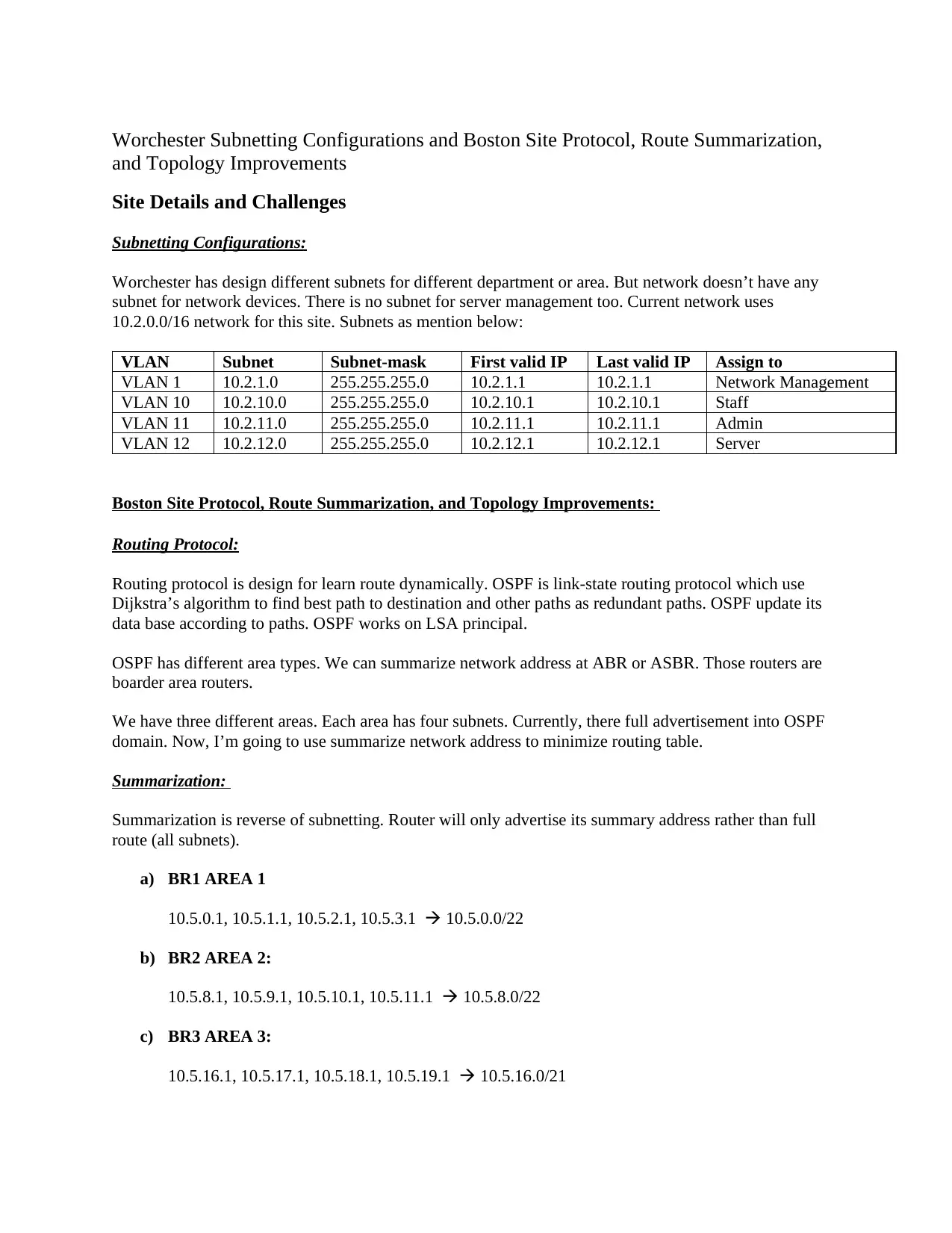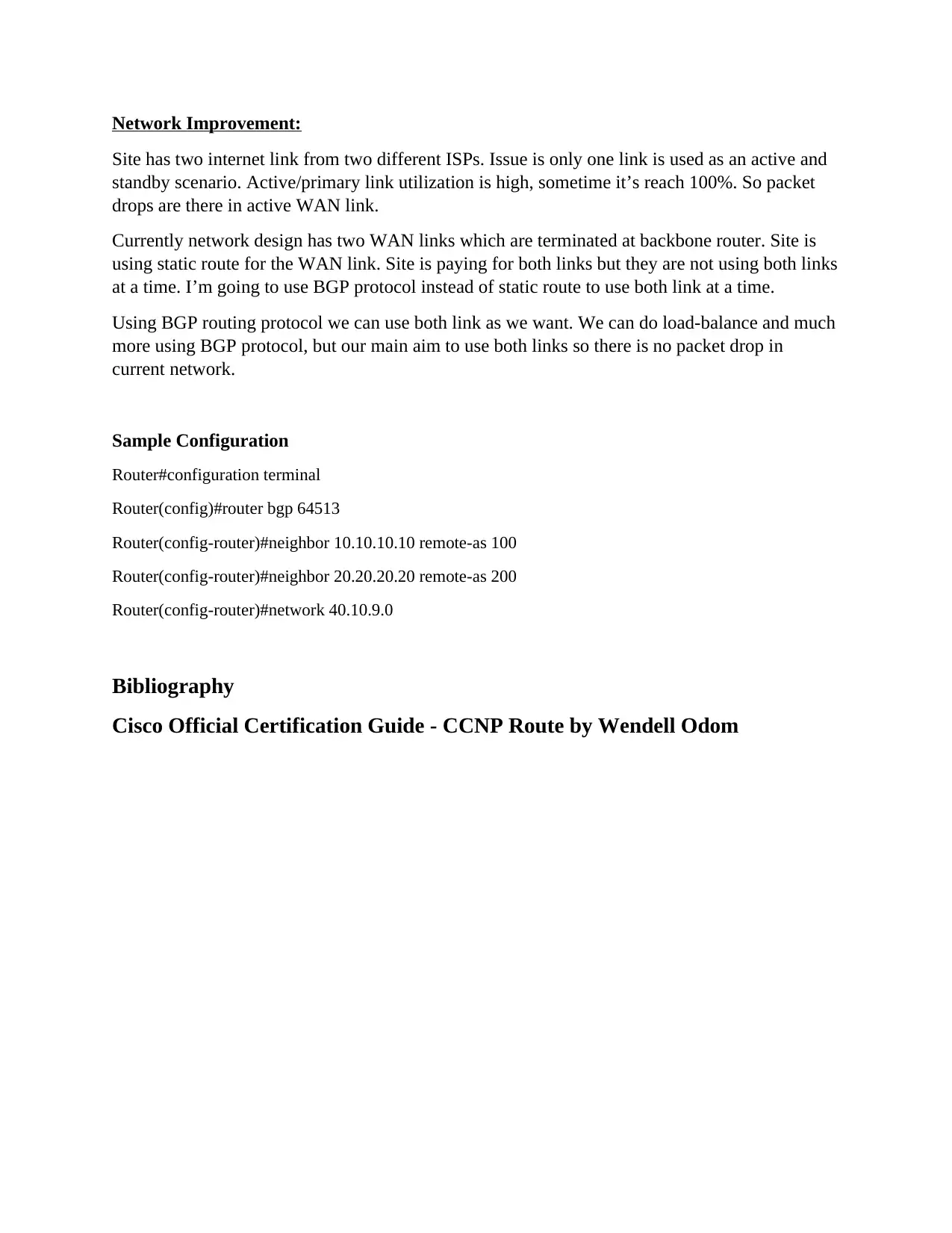Worchester Subnetting and Boston Site Routing and Topology Analysis
VerifiedAdded on 2019/09/25
|2
|492
|166
Report
AI Summary
This report provides a comprehensive analysis of the network design for Worchester and Boston sites. The Worchester section focuses on subnetting configurations, identifying issues such as the lack of subnets for network devices and server management, and proposes a new subnetting scheme. The Boston site analysis delves into the routing protocol, specifically OSPF, and suggests the implementation of route summarization to minimize routing table size. Furthermore, the report addresses the existing network's inefficient use of two internet links, proposing the use of BGP to enable load balancing and ensure both links are actively utilized, thereby preventing packet drops and improving overall network performance. The report concludes with a bibliography referencing relevant Cisco certification guides.
1 out of 2







![[object Object]](/_next/static/media/star-bottom.7253800d.svg)